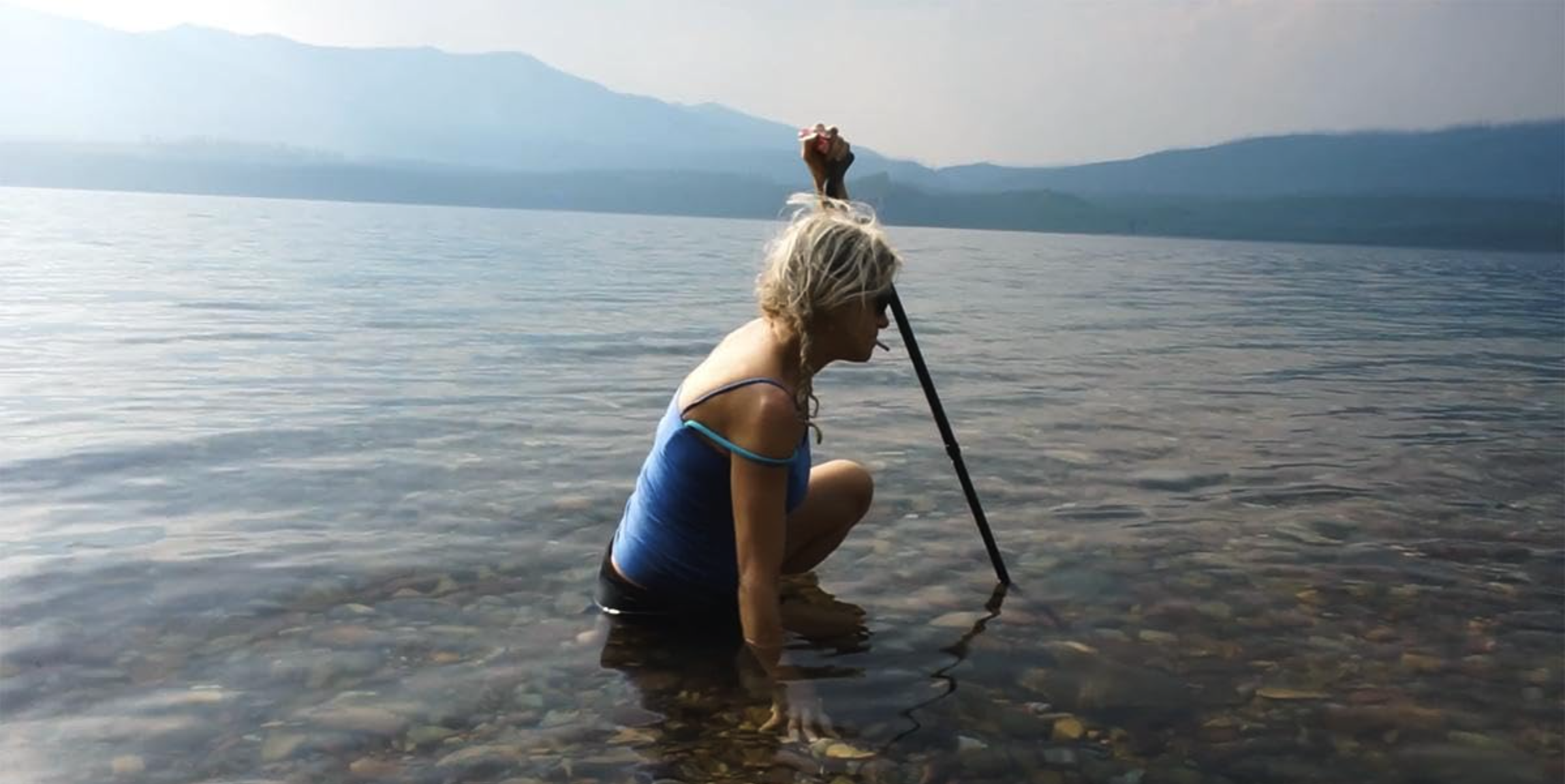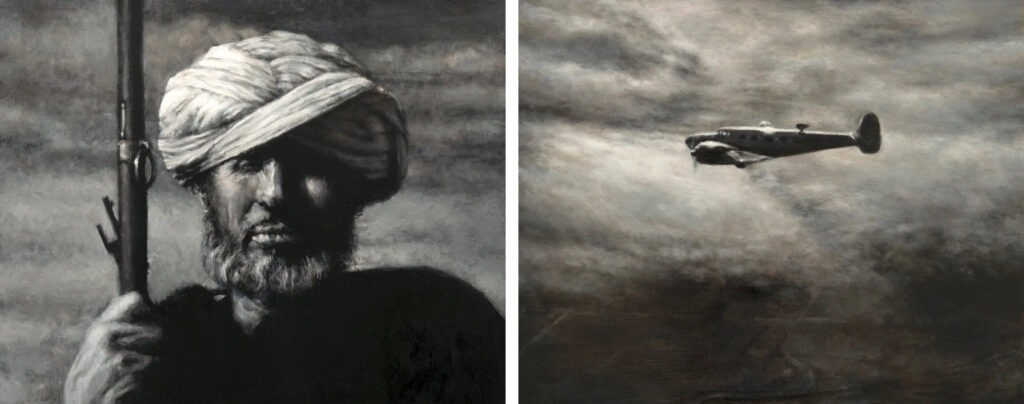Shortly after Martin Krafft received his MFA in Photography, Video & Imaging from the University of Arizona School of Art, he headed to Montana and joined a hiking group through Facebook.
That’s where the filmmaker and social practice artist met Rachel Heysham, a free-spirited, young grandmother who had relocated to Missoula to start a new life out of her RV, only to learn her cancer had returned and doctors told her she had two months to live.
It was the summer of 2020. As the nation began to grapple with COVID-19, the two decided to make a documentary together — “her, in the hopes that she would survive and be an inspiration to people with cancer; me, because I was drawn to her enormous will to live,” Krafft said.

He began sleeping on Heysham’s RV couch, driving her to hiking trails, hot springs and doctor’s appointments, and fundraising for her living expenses. Filming took them from Montana to her hometown in Lawrenceville, Pennsylvania — where she had survived abuse, addiction, illness and poverty — to Kansas, back to Montana and finally again to Lawrenceville, where Heysham died in November 2022. She was only 47.
Krafft pressed on and finished the documentary, “Ain’t Got Time to Die.” His 67-minute film, edited by Emma Thatcher, won or took finalist honors at several festivals in the U.S. and abroad in 2024. With the festival run mostly done, he “got tired of waiting to be able to share the film with folks” and decided to release it to the public this year through Eventive, an online streaming platform dedicated to making independent films more accessible to audiences.
“When I was making the film, I was so caught up in being present with Rachel that I did not have much capacity to think about the life of the documentary after it was made,” Krafft said. “I just knew I had to make it. I was very glad to be able to show Rachel about two-thirds of the film. It was hard for her to watch, but she felt seen by it, understood and appreciated for who she was, without having to be anyone else.”

Early in “Ain’t Got Time to Die,” he asks Heysham how she wants to be seen. “As a fighter,” she says. “As a survivor.” The documentary follows the highs and lows of navigating medical care with a terminal illness. (Heysham tells Krafft she was first diagnosed with squamous cell carcinoma when she was 32 and had her cervix removed.) Despite debilitating pain, she rallies to go on adventures, such as hiking barefoot up mountains alongside her part-wolf puppy and kayaking.
For Krafft, though, being her medical advocate becomes a challenge, and the film looks candidly at their conflicts over her skepticism of conventional medicine and Heysham’s arguments with her daughter, Alisha. He counters the sadness with moments of levity and joy — showing heartfelt interactions between Heysham and her grandchildren and dogs.
“Now that the film is publicly available, I have to do the hard work of getting it out into the world,” Krafft said. “Everyone who I’ve gotten feedback from — family, friends and strangers — are deeply moved by it. Everyone sees how much Rachel wanted to live and are deeply moved by that.”
Social practice background
Bringing strangers into his filmmaking and art is important to Krafft. Based in Schwenksville, Pennsylvania, he works as a stone mason and community and political organizer and runs Red Rock Rabbit Ranch, an artist residency that supports housing insecure artists.
Inspired by his Quaker practice, he uses video, photography, social practice, sculpture and writing to explore boundaries of “otherness” and share people’s voices not often heard in the media, he said. Krafft has worked in a Catholic Worker house serving the unhoused and Death Row inmates, as an inner-city teacher’s aide, as an alternative preschool teacher and as a nonviolence facilitator.
“Because of these experiences, I’ve interacted deeply with many different kinds of people, seen them in difficult situations,” said Krafft, who received his undergraduate degree in creative writing and economics at Emory University in Atlanta. “That’s taught me to be open to people who are different from me, to try to approach our differences with curiosity and compassion. And whenever that effort fails, to have the humility to learn from incongruities.”

While at the University of Arizona, he and fellow MFA graduate Elena Makansi held a 2018 interactive art exhibit, “A Memorial for Past and Potential Gun Victims,” at the Lionel Rombach Gallery. They invited participants to trace photographs of people who lost their lives to gun violence, with the option to hang the tracings on a wall for others to see. Krafft and Makansi held a similar exhibit — “Who Will Be Next?” — on the U of A Mall in 2017 and in Rochester, New York, in 2023.
Krafft and Makansi also created “Traces,” a sculpture memorial for the 2019 Pima County victims of gun violence as part of the 2019 Marcia Grand Centennial Sculpture Award prize. They traced the 204 names and or faces of those who had been lost.
During the 2020 presidential campaign, Krafft hitchhiked across the country, accepting rides from both Trump and liberal supporters and interviewing them. He weaved together their videos for a website titled “Cassandra 2020,” with help from his Quaker community.
MFA program ‘got me up to speed’
Krafft made what he called his first “documentary-ish film” in a video class with School of Art Regents Professor Sama Alshaibi.
“Even though I was the only one making documentary work, Sama has a really good ability to see what you’re trying to make, what its strengths are, and where it needs to go,” he said. “(Now retired Professor) Joseph Labate and (Professor) Martina Shenal in the photo department were also very helpful. Beverly Seckinger, a professor in the School of Theatre, Film and Television, let me sit in on her documentary class.”
Krafft’s 2020 MFA thesis project, “matriarch,” reflected upon the death of his grandmother and how his family went “about mourning and recalibrating our relationships in her absence.” Centered around a three-part experimental documentary of the same name, the installation also featured a photo book with writing, chairs, a corner cupboard holding her purse and a poem — and a wall print made from one of her water-damaged photos.

“I was coming to the Studio Art MFA degree from a writing background. I still used that writing, narrative perspective in my work, but the MFA got me up to speed on what was happening in the art world, what kind of questions were being asked,” Krafft said. “One of the most important questions for artists to sit with is who is making the work, and how does that identity shape what they are seeing.”
What advice does he have for School of Art students wanting to follow in his footsteps?
“For anyone who wants to make a film, I would say just get started,” Krafft said. “I didn’t have a nice camera when I started shooting ‘Ain’t Got Time to Die.’ And the footage wasn’t that great, and the sound was terrible. But it was enough to put me in the world of the film and realize how committed I was to the project, which prompted me to upgrade my gear and be able to use it better on the fly.”
Krafft also said students should heed a message from his old Emory University photography professor, Jason Francisco: “If you want to be an artist, you do it because you have to do it. No one will understand or validate that choice.”
Future projects
Continuing to take Francisco’s advice, Krafft said he’s working on a documentary, “Grampy’s Red Rock Rabbit Ranch,” about the farmhouse where he’s been living in Pennsylvania with his grandfather.
“I was lucky enough to make this film with my friend, a very talented filmmaker, Laura Asherman, so that made it much easier to create than ‘Ain’t Got time to Die.’ We just got to picture lock and will start applying to film festivals in a couple months,” Krafft said.
“I’m also finishing up a video essay on a socially engaged art project called, “Poetry for Strangers,” in which I recited a Rilke poem 1,000 times to strangers throughout Berlin.”
In the meantime, Krafft hopes more people will watch “Ain’t Got Time to Die” now that it’s on a streaming platform.
“As far as a message that I want the film to convey, it’s difficult to reduce to one,” he said, “but maybe the most important one would be an invitation for viewers to channel Rachel’s curiosity for the unknown.”
That message shines through late in the film, when Heysham’s granddaughter Amanda tells Krafft why she wants to be like her grandma:
“Because she explores.”
‘Ain’t Got Time to Die’ 2024 Awards
- Nawada International Film Festival. Best Documentary Winner. Nawada, India
- West Kortright Center Film Festival. Best Picture, Best Documentary Winner. West Kortright Center. East Meredith, New York
- We Make Movies International Film Festival. Best Picture Finalist. Los Angeles
- Lake County Film Festival. Best Picture Finalist. Lake Forest, Illinois
- Southern Maryland Film Festival. Audience Award Winner, Jury Award Finalist. California, Maryland
- Northeast Pennsylvania Film Festival. Best Documentary Finalist. Waverly, Pennsylvania









